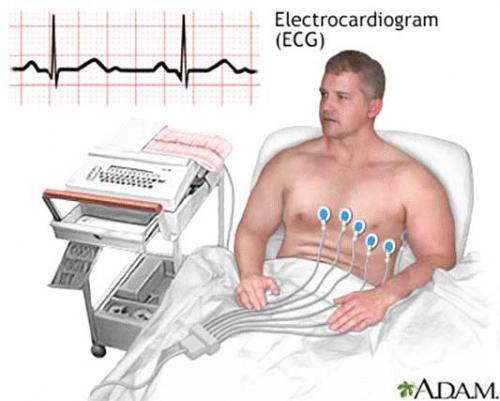Electrocardiogram
 Definition:
Definition:
The ECG is a device used to record on graph paper the electrical activity of the heart. The picture is drawn by a computer from information supplied by the electrodes.
Your doctor uses the ECG to:
- assess your heart rhythm
- diagnose poor blood flow to the heart muscle (ischemia)
- diagnose a heart attack
- diagnose abnormalities of your heart, such as:
- heart chamber enlargement
- abnormal electrical conduction
To prepare:
- Avoid oily or greasy skin creams and lotions the day of the test. They interfere with the electrode-skin contact
- Avoid full-length hosiery, as electrodes need to be placed directly on the legs.
- Wear a shirt that can be easily removed to place the leads on the chest.
What to expect:
During a resting ECG, a technician will attach 10 electrodes with adhesive pads to the skin of your chest, arms and legs. Men may have chest hair shaved to allow a better connection. You will lie flat while the computer creates a picture, on graph paper, of the electrical impulses travelling through your heart.
It takes about 10 minutes to attach the electrodes and complete the test, but the actual recording takes only a few seconds.
Your ECG patterns will be kept on file for comparison with future ECG recordings.
If you have questions, ask your doctor.
